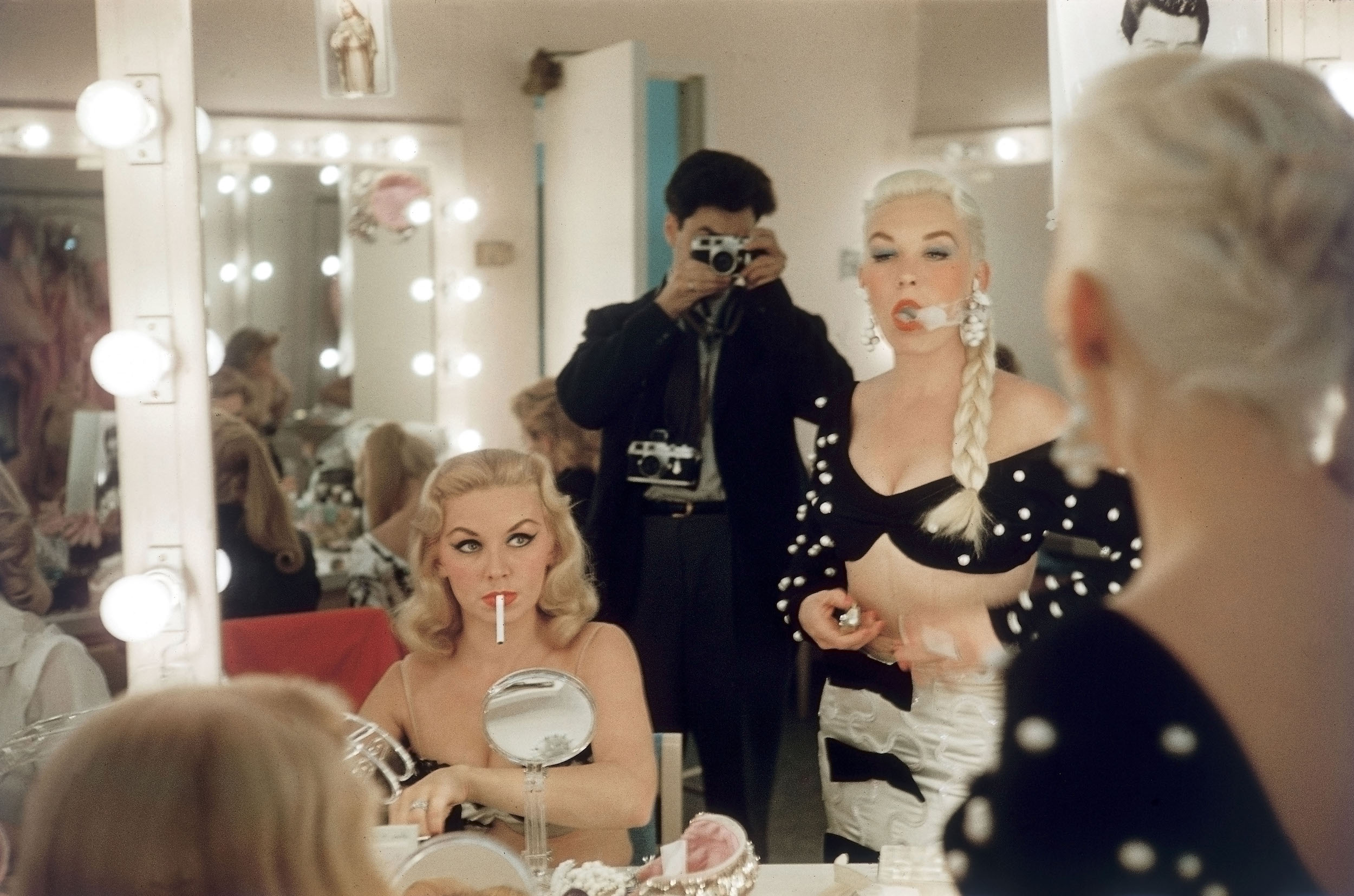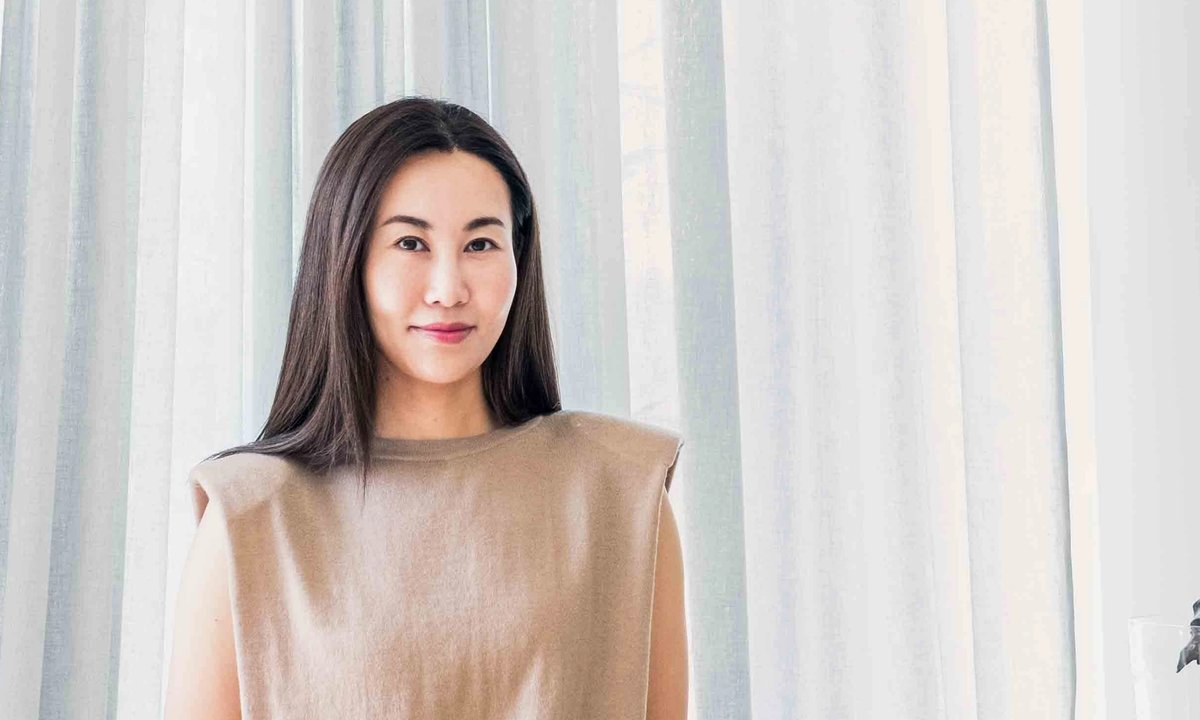Untitled
1988 - Installation (Installation)
39 3/8 x 31 1/8 in.
Martin Kippenberger
Martin Kippenberger’s late collages are known for incorporating a wide range of materials, from polaroids and magazine clips to hotel stationery, decals, and graphite drawings. Untitled is a collage on paper work by Kippenberger that typifies his everything-goes approach: a barely discernible, sliced image of Michael Jackson’s face is overlaid and woven with strips and triangular shapes from a different source into a single composition. Blue tones come from torn out pages of a book where fragments of illustrations can be seen. Together, all the elements suggest an alternative, highly stylized portrait of the artist; in this case, a fragmented, fluid, and itinerant sense of identity. Consistent with other works by the artist, Untitled defies any specific style and continues Kippenberger’s inquiry into the self and its potential to manifest through the objects and materials that we modify.
Martin Kippenberger is widely regarded as one of the most talented German artists of his generation. Although he was incredibly prolific in a diverse range of media—drawings, collage, sculpture, performance, painting, photography, installations, prints, ephemera.—his best-known works are paintings, many of them self-portraits. Kippenberger was a very polarizing figure, known by many for being a provocateur and for making politically charged work as artworld commentary. Often taking on different art historical tropes, his work tested the boundaries of authorship and originality. He was known to hire others to paint for him under a pseudonym, or use work by other artists to create new work. Examples include restaging a photograph of Pablo Picasso; turning a monochrome by Gerard Richter into a coffee table; and claiming an installation of his as the last chapter of an unfinished novel by Franz Kafka. One of his key concerns was to try to understand the artist’s place in the modern world, and how their essence and personality can become apparent in the objects that they create.
Colors:
Related works of genres: » contemporary artist, » conceptual artist, » german contemporary artists, » 1953–1997, » installation artist, » artist's book, » relational art
» see more

© » KADIST
Hans-Peter Feldmann
The types of objects Feldmann is interested in collecting into serial photographic grids or artist’s books are often also found in three dimensional installations...

© » KADIST
Hans-Peter Feldmann
The types of objects Feldmann is interested in collecting into serial photographic grids or artist’s books are often also found in three dimensional installations...

© » KADIST
Raymond Pettibon
2005The five works included in the Kadist Collection are representative of Pettibon’s complex drawings which are much more narrative than comics or cartoon...

© » KADIST
Kara Walker
2005In her masterpiece 8 Possible Beginnings or The Creation of African-America , Walker unravels just that, the story of struggle, oppression, escape and the complexities of power dynamics in the history following slave trade in America...
Related works featuring themes of: » Color Photography, » Drawing, » German
» see more

© » KADIST
Hans-Peter Feldmann
The types of objects Feldmann is interested in collecting into serial photographic grids or artist’s books are often also found in three dimensional installations...

© » KADIST
Hans-Peter Feldmann
The types of objects Feldmann is interested in collecting into serial photographic grids or artist’s books are often also found in three dimensional installations...

© » KADIST
Desiree Holman
2010Reborn, 2010 is a three-channel video by Desiree Holman that questions ideas of motherhood and the maternal instinct...

© » KADIST
Vincent Leong
2012The photograph Exquisite Eco Living is part of a larger series titled Executive Properties in which he digitally manipulated the images to insert iconic buildings of Kuala Lumpur in the view of derelict spaces also found in the city...
Other related works, blended automatically
» see more

© » KADIST
Martin Kippenberger
19897″ Single ‘Pop In’ by Martin Kippenbergher consisting of a vinyl record and a unique artwork drawn by the artist on the record’s sleeve...

© » KADIST
Hans-Peter Feldmann
The types of objects Feldmann is interested in collecting into serial photographic grids or artist’s books are often also found in three dimensional installations...

© » KADIST
Hans-Peter Feldmann
The types of objects Feldmann is interested in collecting into serial photographic grids or artist’s books are often also found in three dimensional installations...

© » KADIST
Kota Ezawa
2002The Simpson Verdict is a three-minute animation by Kota Ezawa that portrays the reading of the verdict during the OJ Simpson trial, known as the “most publicized” criminal trial in history...
Related works sharing similar palette
» see more

© » 1854 PHOTOGRAPHY
‘You wait for someone to fill the frame’: Remembering Elliott Erwitt in Paris - 1854 Photography Subscribe latest Agenda Bookshelf Projects Industry Insights magazine Explore ANY ANSWERS FINE ART IN THE STUDIO PARENTHOOD ART & ACTIVISM FOR THE RECORD LANDSCAPE PICTURE THIS CREATIVE BRIEF GENDER & SEXUALITY MIXED MEDIA POWER & EMPOWERMENT DOCUMENTARY HOME & BELONGING ON LOCATION PORTRAITURE DECADE OF CHANGE HUMANITY & TECHNOLOGY OPINION THEN & NOW Explore Stories latest agenda bookshelf projects theme in focus industry insights magazine ANY ANSWERS FINE ART IN THE STUDIO PARENTHOOD ART & ACTIVISM FOR THE RECORD LANDSCAPE PICTURE THIS CREATIVE BRIEF GENDER & SEXUALITY MIXED MEDIA POWER & EMPOWERMENT DOCUMENTARY HOME & BELONGING ON LOCATION PORTRAITURE DECADE OF CHANGE HUMANITY & TECHNOLOGY OPINION THEN & NOW Elliott Erwitt in reflection, Tropicana Hotel, Las Vegas, Nevada, USA, 1957 This article was originally published on 30 March 2023 The passing of Elliott Erwitt is a major loss for the photo community...
Other works by: » Martin Kippenberger
» see more

© » KADIST
Martin Kippenberger
19897″ Single ‘Pop In’ by Martin Kippenbergher consisting of a vinyl record and a unique artwork drawn by the artist on the record’s sleeve...

© » KADIST
Martin Kippenberger
1989Untitled is a work on paper by Martin Kippenberger comprised of several seemingly disparate elements: cut-out images of a group of dancers, a japanese ceramic vase, and a pair of legs, are all combined with gestural, hand-drawn traces and additional elements such as a candy wrapper from a hotel in Monte Carlo and a statistical form from a federal government office in Wiesbaden, Germany...
Related works found in the same semantic group
» see more

© » KADIST
Chloé Quenum
2017The stained glass windows of Chloé Quenum’s Les Allégories evoke the sacred and describe the movement of a rooster in the form of patterns extracted from a wax fabric found in Benin...






